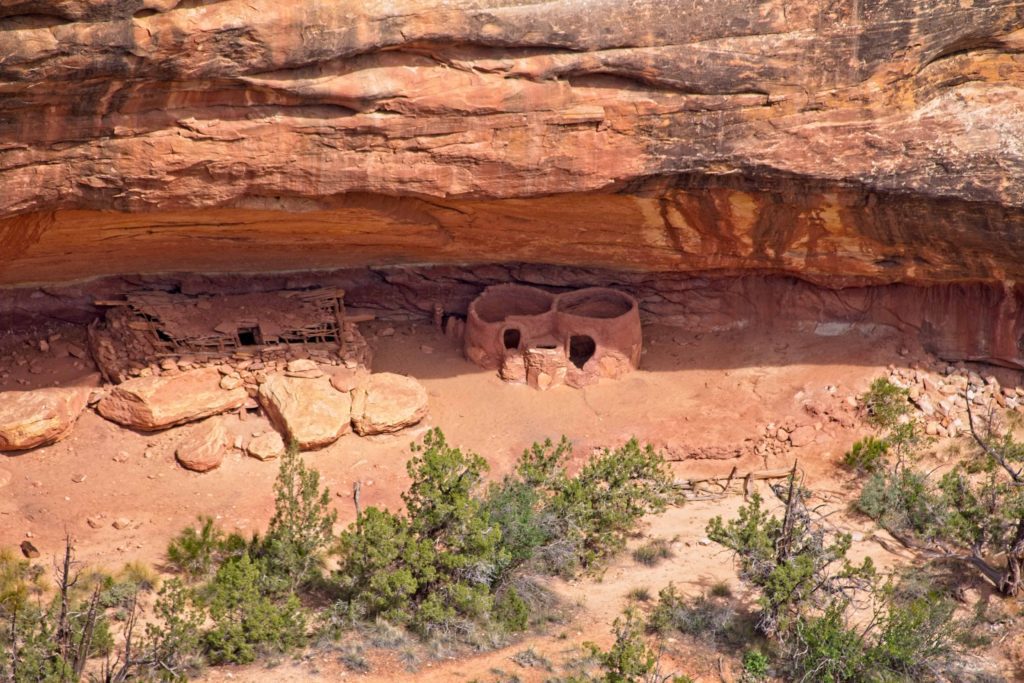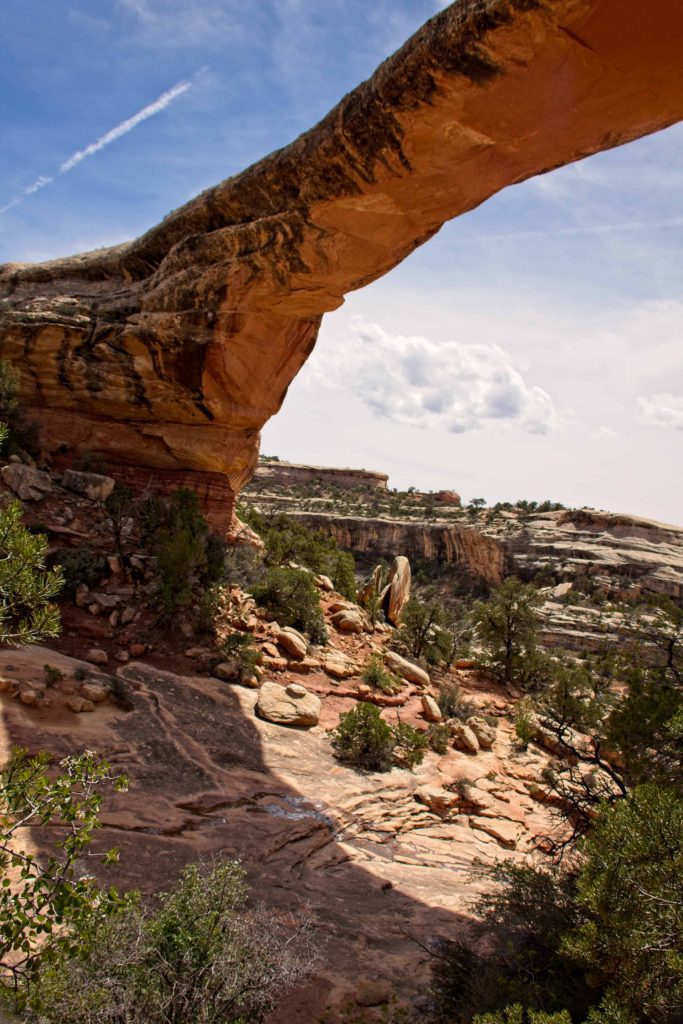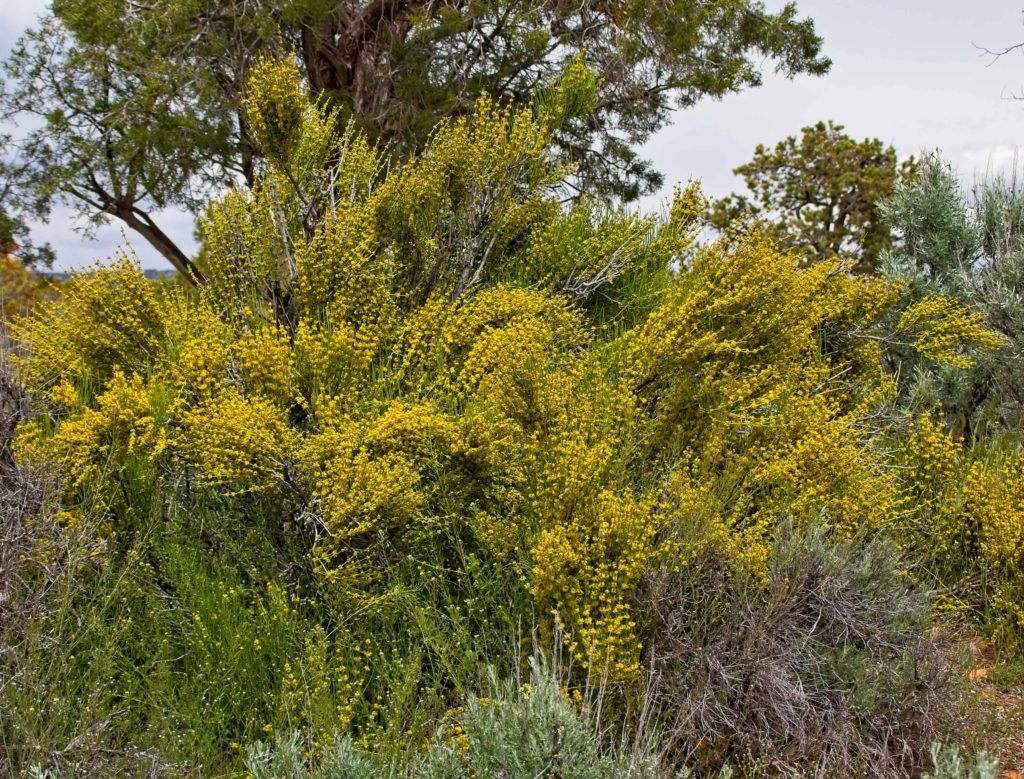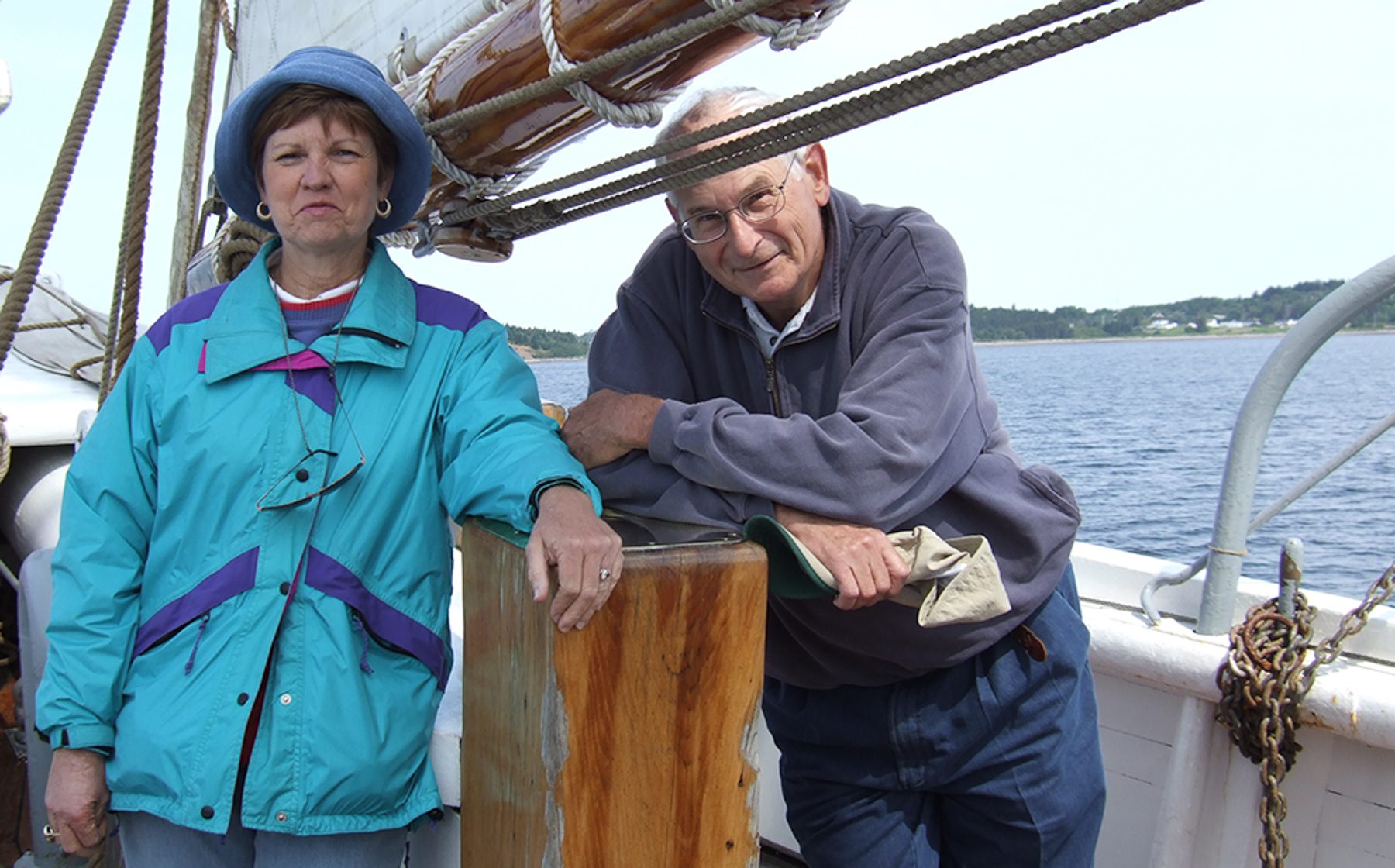Today we bring you photographs of “natural bridges”. So what’s the difference between natural bridges found in Natural Bridges National Monument and arches we photographed in Arches National Park? Natural bridges are formed by the erosive action of moving water. Arches are formed by other erosional forces – mainly frost action and seeping moisture – that also enlarge natural bridges once stream erosion forms them.
Natural Bridges National Monument has three natural bridges. Each of the three bridges is an example of a bridge in a different stage of development. Owachomo is the oldest, Kachina is the youngest and Sipapu is in its prime.
Another benefit of this visit came after a short hike where we viewed our first cliff dwelling of this trip. What is impressive about Horseshoe Collar Ruins is its location in the middle of a massive cliff.
Below is a series of three photographs of Horseshoe Collar Ruins. We put these three in sequence to provide a perspective of the location of the ruins. Can you identify the ruins in the first photograph?

The ruins are located in the third crevice down from the top. Can you imagine getting to and you’re your house (perhaps on a daily basis)?

A closer view of Horseshoe Collar

Finally, we are close enough to identify various structures. The two round structures are for grain storage. Just imagine the importance of someplace to keep their life-giving staple during harsh winter periods (and even from year to year). The structure to their left is the remains of a dwelling.

Sipapu Bridge is 220 high, spans 268 feet, is 31 feet wide and 53 feet thick.

Kachina Bridge is somewhat hard to see. If you look closely you can see light shining through it in the center of the photograph. It is 210 feet high, a span of 204 feet, is 44 feet wide and 93 feet thick. This is the youngest bridge.

Owachomo Bridge is the oldest and most photogenic. It is 106 feet high, spans 180 feet, is 27 feet wide and 9 feet thick. This is the only bridge we hiked down to this year. Meriam, located in the lower right, provides a perspective of its size.

Another view of Owachomo.

Yet another of Meriam’s flowers 🙂

We came upon this ruin as we drove away from Natural Bridges. One of the things we have discovered is the prevalence of individual ruins. Most are not part of a larger settlement like we will see in Mesa Verde. Here is a pretty impressive Kiva. The shaft at the bottom level is an air vent to the outside. The stone immediately in front of it is the wind deflector. The shaft to the upper right of the air vent leads to multi-story tower nearby.

maoMeriam, is that what is called broom grass? The bridges are phenomenal
HaroldMB says this is called Morman’s Tea.
David RayburnThis is very impressive. Thanks for all the information.
HaroldYou are most welcome.
Ginny JonesThe architecture of the last ruin is impressive. Was it built by a ‘village’ or a ‘family’
HaroldThis cliff dwelling was almost certainly built as a single-family (perhaps extended family) dwelling.